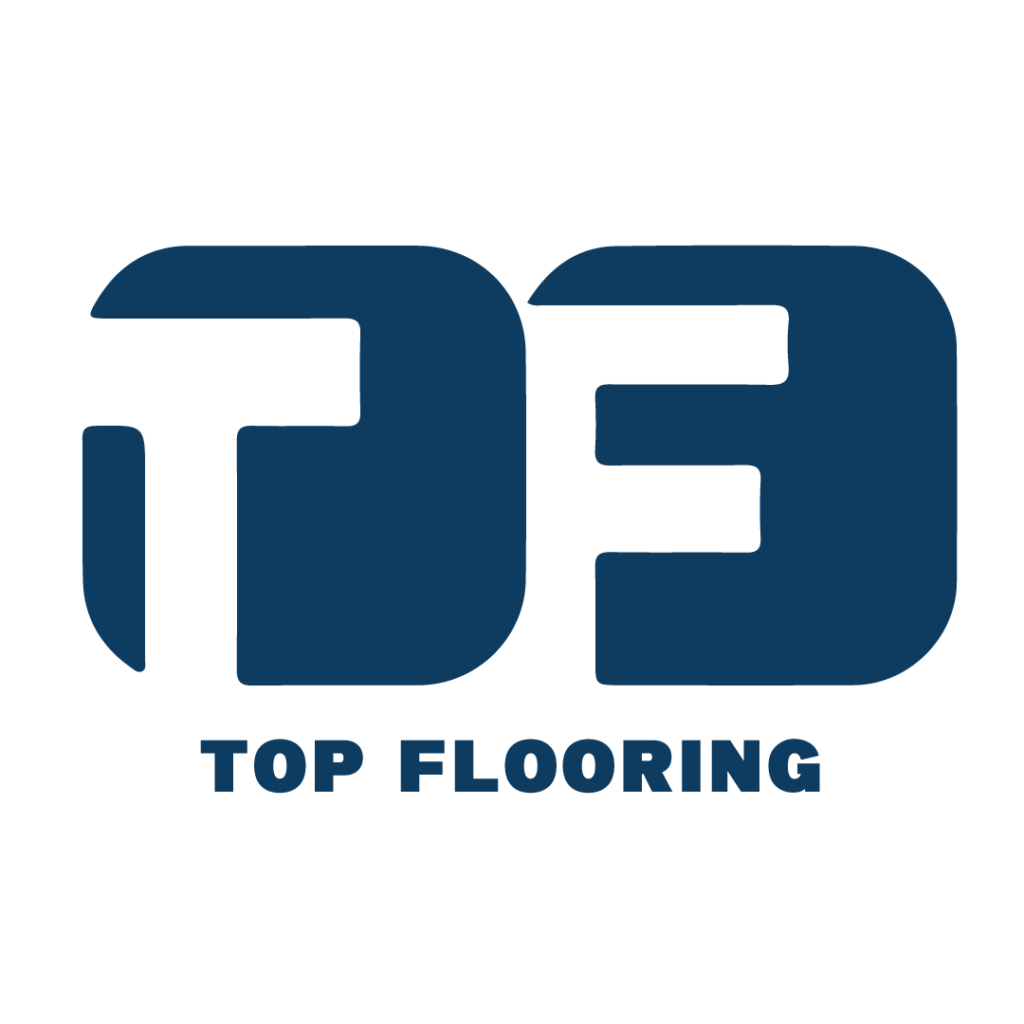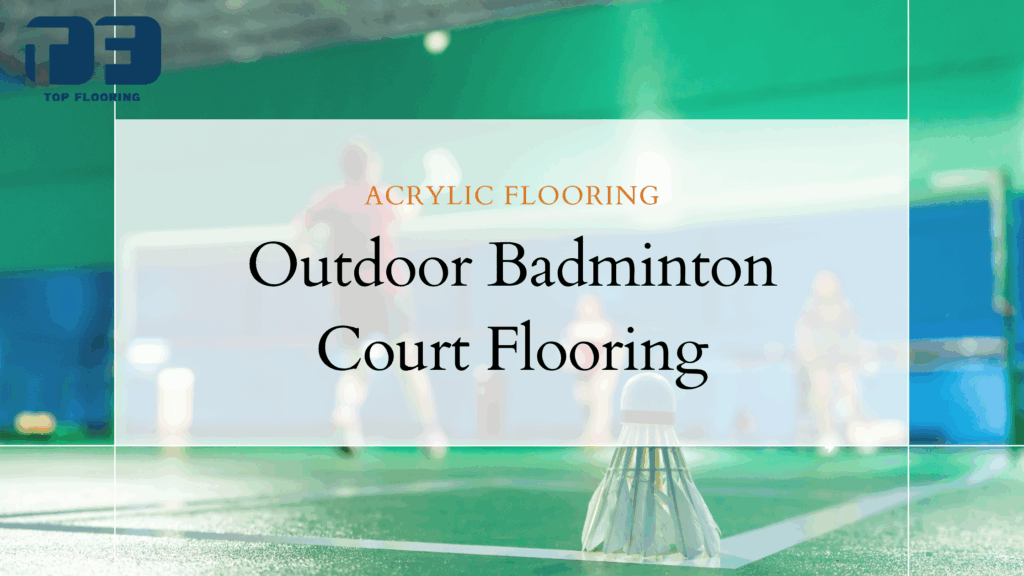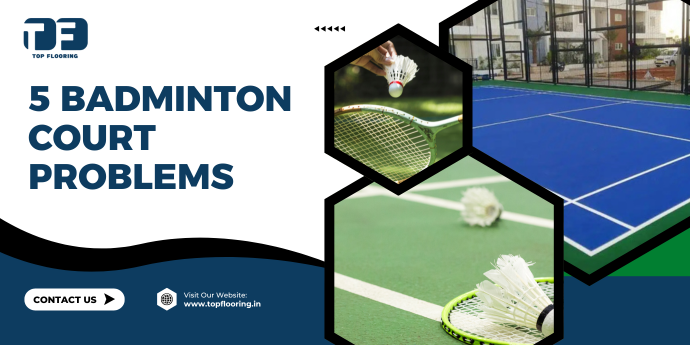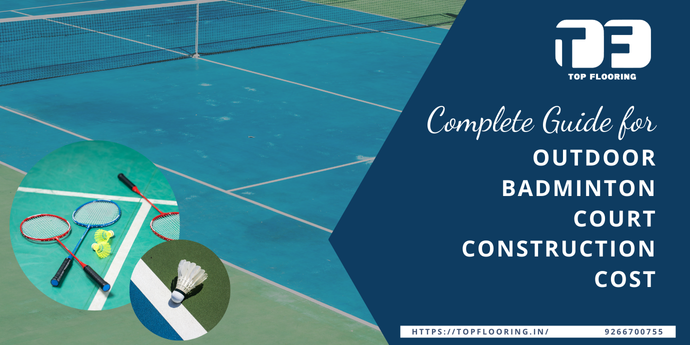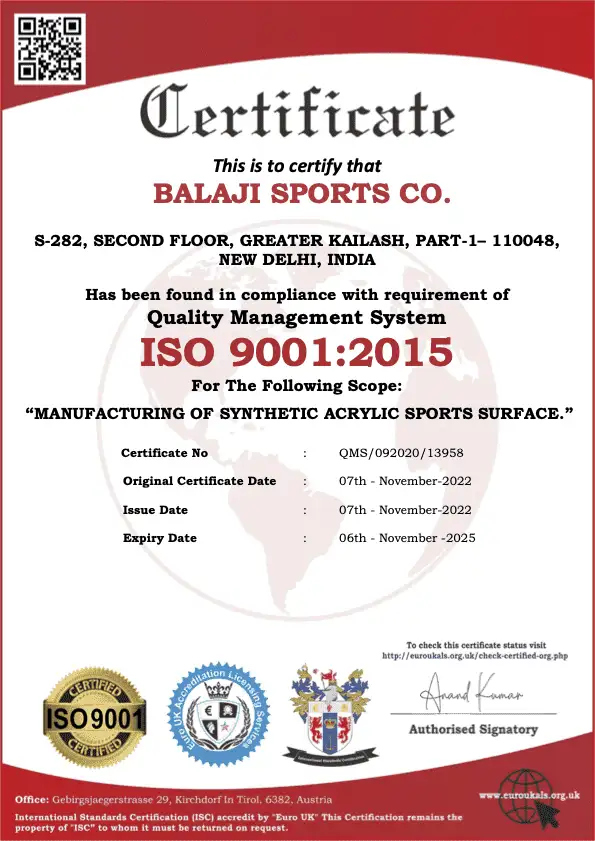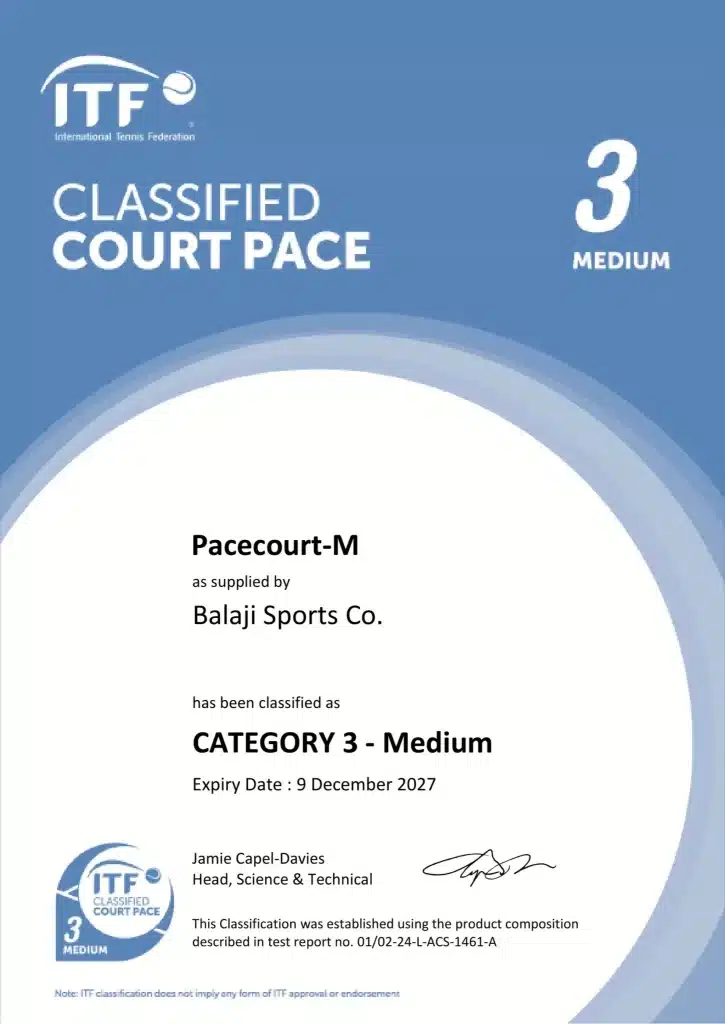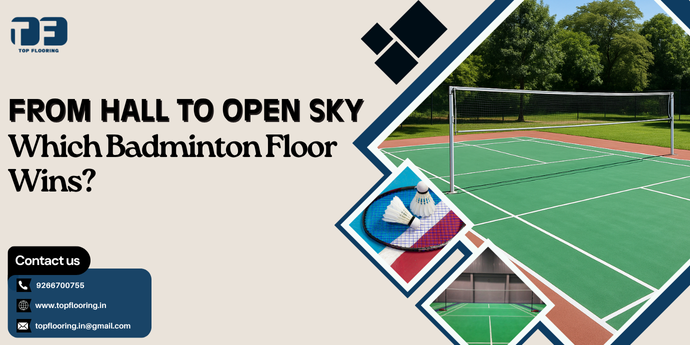
Badminton stepped up from a fun weekend game to a real high-stakes competitive sport that requires top-notch skill: precision, agility. Whichever it is – schools with badminton clubs, sports academies with a badminton program, or just a local badminton court in a residential area, or even a pro badminton arena. One of the biggest problem you face during badminton court construction is picking the right indoor and outdoor badminton court flooring.
What about wood or acrylic flooring. Indoor badminton surfaces, or outdoor badminton courts with synthetic flooring? How popular is badminton going to be on your court. What the local weather is like, how much you’re willing to spend upfront, and what kind of shape it’ll be in 5 years.
This comprehensive guide from Top Flooring goes deep, covers all the bases from the best badminton flooring materials, installation, and how well it’ll perform over time, and what will the cost of badminton court flooring.
Why Badminton Court Flooring Matters?
The badminton court flooring is the foundation of every shot, jump, and landing. It directly affects player comfort, movement, and injury prevention. It’s one of the most important parts of court design. A bad surface can compromise performance, durability, and even player safety. Unlike normal cement or tile surfaces, synthetic badminton court flooring is scientifically designed to meet professional play standards and long-term durability.
Here’s why it is essential:
- Consistent Grip for Smooth Footwork:
The surface texture provides controlled traction. So players can move swiftly in all directions without slipping, even during intense rallies. - Impact Absorption to Reduce Strain:
Multiple cushioning layers absorb shock from jumps and landings, protecting joints and reducing fatigue during long hours of play. - Even Bounce and Friction:
Uniform coating and texture ensure even bounce and friction for precise high-speed badminton rallies. - Weather Resistance for Outdoor Courts:
UV-resistant and all-weather coatings make synthetic badminton courts perfect for Indian conditions. While maintaining playing quality in heat, rain, and humidity.
Every professional facility, whether its indoor or outdoor badminton court flooring. It follows detailed badminton court construction specifications to maintain global standards of safety, consistency, and durability for years of play.
Badminton Court Flooring Types
Choosing the right badminton floor material depends on where the court is located and how it will be used. Each flooring type offers a unique mix of comfort, performance, and durability.
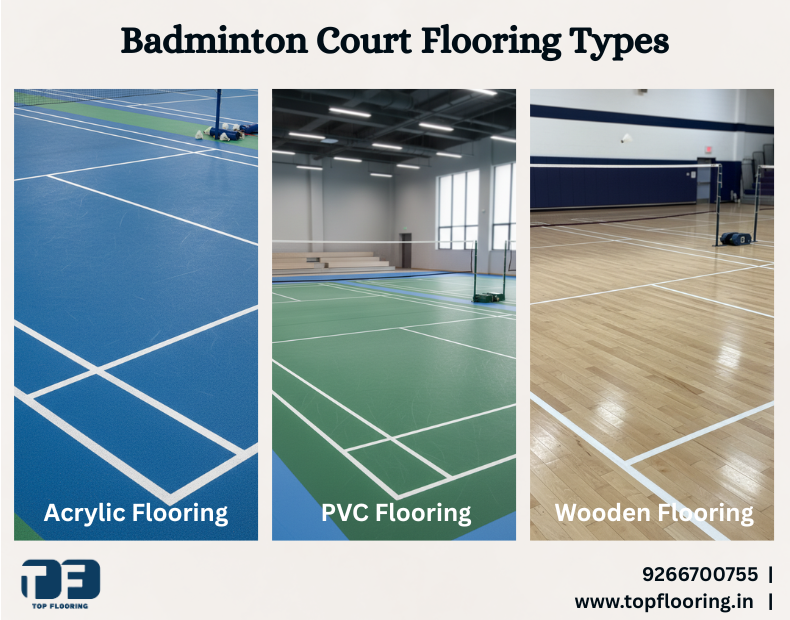
1. Wooden Flooring (Indoor)
Wooden flooring is the top choice for professional indoor badminton academies and elite clubs. Because of its premium feel and natural bounce. It has good shock absorption and grip, but demands strict humidity control as moisture can cause warping or swelling. While it enhances gameplay quality. It also involves high installation costs of badminton court and requires periodic sanding or polishing to maintain its finish.
2. PVC or Vinyl Flooring
PVC or vinyl flooring is made of multi-layered synthetic rolls laid over a leveled subfloor to create a uniform play surface. It’s a budget-friendly option for schools and recreational centers, provides decent cushioning and grip for casual matches. But not suitable for outdoor badminton court flooring. Because UV rays and high temperatures can damage the surface and reduce its lifespan.
3. Acrylic Badminton Court Flooring ( For Outdoor)
Acrylic systems are built using multiple layers of synthetic coatings applied over concrete or asphalt to create a seamless and resilient surface. It provides an excellent balance of grip, bounce, and durability, making it suitable for both indoor and outdoor use. UV-resistant and weatherproof properties allow consistent play in the Indian climate, from dry heat to monsoon.
Available in cushion and non-cushion systems, acrylic badminton courts deliver professional-level performance with minimal maintenance. Because of its versatility, acrylic badminton court flooring has become the preferred choice across India for schools, clubs, and sports complexes.
Indoor Badminton Court Flooring
Indoor badminton courts give players a controlled environment. Whether you are looking for a premium court to upgrade your skills or a serious enthusiast. The choice of badminton court flooring is all about finding the perfect balance between comfort, precision, and consistent performance.
Indoor Badminton Court Flooring Options:
- Wooden Flooring: Wooden floors offer excellent shock absorption, a premium look, and smooth playability—making them ideal for indoor arenas. However, they do need regular care to prevent issues like warping or cracking due to moisture or temperature changes.
- PVC or vinyl: Lightweight, durable, and versatile—PVC or vinyl floors are perfect for indoor sports halls that serve multiple purposes. They’re quick to install, easy to maintain, and provide a balanced mix of comfort and resilience for various sports activities.
- Cushion Acrylic set-ups over a concrete base: Modern and performance-driven, cushion acrylic setups provide a smooth, seamless surface with superior grip and comfort. Installed over a concrete base, they combine durability with player safety, making them one of the most popular choices for outdoor and multi-sport courts today.
What are the Benefits of Indoor Badminton Courts?
- Shock absorption: A true game-changer for player safety, this feature cushions every landing, reducing stress on joints and minimizing the risk of long-term injuries.
- Smooth Play Experience: Enjoy effortless movement and quick direction changes on a perfectly leveled surface that maintains traction even during intense gameplay.
- Temperature Stability: Engineered to perform in all weather conditions, the surface remains stable and consistent — no warping, softening, or cracking due to heat or humidity.
- Customization Options: Add a personal touch with custom colors, logos, and branding elements — ideal for academies, schools, and sports clubs aiming for a distinctive professional look.
How to maintain indoor badminton court?
- Wood Flooring Maintenance: Regular dry mopping and periodic re-polishing help preserve the surface’s shine, cleanliness, and long-term durability.
- PVC Surface Care: An occasional recoat restores traction, refreshes color vibrancy, and maintains top-level performance for years.
- Low Maintenance Advantage: With minimal dust and no water retention issues, cleaning is effortless — ensuring your court stays in excellent condition with very little upkeep.
These floors are an investment, and yes, it costs a bit more to build out an indoor badminton court. But trust us, the rewards for the players and the facility owners are huge – it’s like having a piece of heaven on earth.
Outdoor Badminton Court Flooring: Durability and Practicality
With India’s year-round sports culture and increasing interest in community play zones, outdoor badminton courts have become the preferred choice for schools, societies, and academies. The biggest challenges—heat, rain, and prolonged UV exposure—are efficiently handled through outdoor synthetic badminton court flooring, which ensures all-season durability.
Outdoor Badminton Court Construction Details
Base Layer
100–125 mm thick M20 grade reinforced concrete or asphalt base provides structural strength and long-term stability. It is built with a 1:100 slope to allow water to drain out during monsoons.
Resurfacing Layer
Acrylic resurfacer blended with graded silica sand creates a smooth yet textured base that enhances grip. This layer seals the surface pores and ensures the subsequent coats bond uniformly across the entire court.
Cushion Layer (Optional)
Multiple coats of acrylic cushion are added to increase flexibility and impact absorption. This optional layer gives players better comfort, reduces stress on ankles and knees during fast movements.
Top Coats
High-quality UV-resistant color coatings in green, blue, or red provide a vibrant and weatherproof finish. These top layers protect the surface from fading, cracking, and heat damage, and maintain play consistency all year round.
Line Marking
Durable white acrylic line marking paint is applied as per BWF-approved dimensions of 13.4 m × 6.1 m. It provides sharp and anti-glare visibility for players and stays intact even under outdoor weather conditions.
All these layers together form a seamless, non-porous, and low-maintenance badminton surface engineered for consistent performance across every season.
Materials Used in Outdoor Badminton Flooring
Acrylic Resurfacer: Forms the base layer that smoothens the irregularities, seals the pores, and enhances coating adhesion.
Acrylic Cushion Coat: Adds a resilient cushioning effect that improves player comfort and impact absorption.
Color Coat (UV-Resistant): Delivers the final aesthetic and protective layer that resists sunlight, moisture, and wear.
Line Marking Paint: Ensures accurate court boundaries with high visibility and excellent durability.
Each of these components is manufactured by Top Flooring using ITF and ISO certified formulations, ensuring premium quality, superior grip, and long-lasting performance for every outdoor badminton court flooring material system.
Synthetic Flooring for Badminton Court: The Smart Choice
For indoor or outdoor courts, synthetic badminton court flooring has changed the way courts are built today. It has resilience, comfort, and cost effectiveness, that is why it’s the preferred choice for schools, clubs, and residential projects.
Benefits of Synthetic Badminton Court Flooring
1. All Weather Performance: Designed for India’s weather, synthetic acrylic layers resist UV rays, rain, and humidity, giving a consistent playing surface for indoor halls and outdoor courts.
2. Low Maintenance: The surface is washable, non-fading, and easy to clean; with proper care, it retains its texture and color for 5-7 years before needing a simple recoating.
3. Safety & Comfort: Engineered for even friction and controlled cushioning, the surface minimizes slips and impact strain, keeping players safe during high-speed rallies and long practice sessions.
4. Customizable Design: Available in multiple color combinations and branding options, these courts can be designed with academy logos, custom borders, and pace variations to match professional standards.
5. Eco-Friendly: Top Flooring uses low-VOC, solvent-free acrylic coatings for sustainability without compromising on performance, trusted by certified sports institutions.
Also, synthetic acrylic coatings can be applied directly over concrete, so it’s a perfect solution for anyone who wants to build a badminton court in backyard with professional-grade results and long-term durability.
Badminton Court Construction Cost
Indoor Badminton Court
The cost of an indoor badminton court depends on the flooring material, level of cushioning, and finish. These factors affect not only the budget but also the playing comfort and durability.
Civil Base Preparation: A strong RCC or subfloor base is a must for stability and long-term surface performance. Proper leveling, curing, and slope ensure accurate play and prevent cracks or water retention.
Wooden or Acrylic Layers: High-quality maple wood or cushion acrylic systems determine the feel and elasticity of the court. While wood has traditional appeal, synthetic acrylic surfaces give similar bounce at a much lower maintenance cost.
Lighting and HVAC: Indoor setup requires uniform LED lighting and an air circulation system to maintain visibility and player comfort. These utilities add to the installation cost but are a must for professional play.
Marking and Painting: Standard BWF-approved line marking and color finish complete the court. Use of premium acrylic paint ensures brightness, durability, and long-lasting visibility.
Overall, a synthetic indoor badminton court flooring is cheaper than a wooden court and gives similar play response, better shock absorption, and longer life.
Outdoor Badminton Court Construction Cost
Outdoor badminton court construction cost is generally more budget-friendly since it eliminates roofing, HVAC, and interior finishing costs. The key investment goes into durable surface preparation and UV-resistant coating.
Concrete Base: The court begins with a reinforced concrete or asphalt base, offering a stable and weatherproof platform. A 1:100 slope ensures proper drainage during rain, reducing maintenance needs.
Acrylic Synthetic System: Multiple layers of non-cushion or cushion acrylic coatings provide grip, traction, and UV protection. These layers make outdoor courts resilient against heat, humidity, and heavy use.
Fencing and Lighting (Optional): Perimeter fencing enhances safety, while outdoor LED floodlights allow evening play. Though optional, these upgrades improve usability and professional appeal.
The biggest advantage of outdoor acrylic systems is their low lifetime maintenance and fast installation, making them ideal for schools, parks, and residential societies.
Badminton Court Cost Comparison Table
| Component | Indoor Court | Outdoor Court |
| Base Construction | RCC / Subfloor | Concrete / Asphalt |
| Flooring Type | Wood / Cushion Acrylic | Non-Cushion Acrylic |
| Maintenance | Moderate | Low |
| Lifespan | 7–10 years | 5–7 years |
| Average Cost Range | Higher | Affordable |
Both systems deliver long-term value, but outdoor synthetic badminton courts have become increasingly popular in India for their cost efficiency, climate resistance, and faster return on investment.
Technical Specifications: Outdoor Synthetic Badminton Court
Outdoor badminton court construction details according to international standards include:
| Layer | Material | Purpose |
| 1 | Concrete Base | Stable foundation |
| 2 | Acrylic Resurfacer | Smooths surface, seals pores |
| 3 | Cushion Coats (Optional) | Shock absorption & comfort |
| 4 | Color Coats | Final play layer: UV protection |
| 5 | Line Marking | Durable white paint for boundaries |
This multi-layered system ensures durability, an anti-glare finish, and long-term player safety.
Building a Backyard Badminton Court – A DIY Guide
Want to create a badminton court in your backyard? With modern acrylic flooring, building a badminton court has become a whole lot easier, faster, and more affordable than it used to be. Here’s how you can turn that ordinary open space into a top-notch outdoor badminton court.
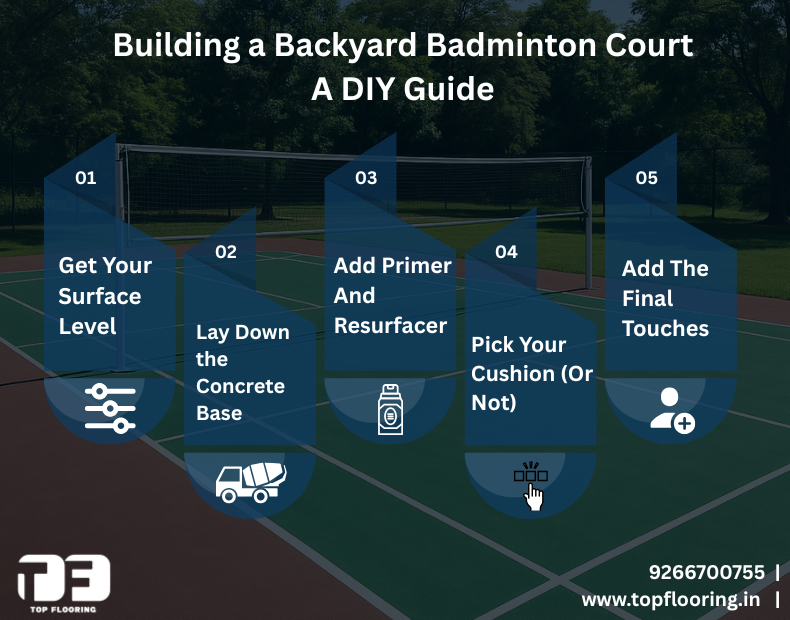
1. Get Your Surface Level
First things first, you’re going to want to get a clean and flat area – one that’s roughly 13.4 × 6.1 meters in size – which is the standard size for a badminton court. Don’t forget to have a gentle slope of 1:100 in place to make sure water drains off properly and doesn’t linger on the surface when it rains.
2. Lay Down the Concrete Base
For the base, you’ll need to get some M20-grade concrete in there, and to really make it hold up, add an 8mm steel mesh for added strength. This foundation is going to be key to keeping your court looking great and playing smoothly in the long term.
3. Add Primer And Resurfacer
Once that base is all cured up, slather on some primer and then follow up with a layer of resurfacer mixed with fine silica sand. This seals up the pores in your concrete and gets everything ready for the next layer to go on.
4. Cushioning Layer
Now you get to decide how you want your court to play – do you want it softer and more shock-absorbing, or faster and more aggressive? The choice is yours – you can go with cushion coats to get that softer feel or non-cushion coats for better speed.
5. Add The Final Touches
For the finishing touches, choose your favourite UV-resistant color coats and then paint high-opacity white paint lines according to the BWF specs to make sure they’re accurate and really pop out.
By following this simple layered process, you’ll have turned your backyard into a high-quality, weather-resistant badminton court surface that’s perfect for daily play or even professional practice.
Color & Design Options for Badminton Court Flooring
In the style of a professional sports surface, Top Flooring offers a variety of vibrant standard color combo. Our top picks being Green with Blue, Red with Blue, and the classic Blue with Light Green. These color pairings not only make the court super visible but also give it that tournament-pro look.
Customize your court: We let you personalize your court with your own academy logos, boundary highlights, and even branded lane markings. It’s a great way to create a unique identity for your institution or club, and you don’t have to sacrifice any of the performance or durability that makes our courts so great.
The finishing touches: Depending on where your court is located and what the lighting’s like, you can choose between a matte, semi-gloss, or anti-glare finish. Each one’s been tweaked to give you the best visibility possible – and reduce glare so players can focus on the match rather than squinting all the time. Put all these options together, and it’s no wonder Top Flooring’s synthetic acrylic badminton court systems are perfect for pros and backyard enthusiasts alike.
Why Choose Top Flooring for Synthetic Badminton Court Projects?
Top Flooring stands as one of India’s most trusted names in synthetic flooring for badminton court construction. With years of expertise, in-house manufacturing, and a strong nationwide applicator network, the brand delivers performance-driven, long-lasting sports surfaces suited for India’s diverse weather conditions.
Complete Acrylic System Supply
Top Flooring provides a full range of acrylic materials — from primers and resurfacers to cushion coats, top color layers, and line-marking paints. Every product is manufactured in-house, ensuring consistent quality and compatibility across the entire system.
Certified Quality
All materials from Top Flooring are rigorously tested and comply with ISO and ITF standards, guaranteeing international-level performance and safety. This ensures every badminton court meets the standards of professional gameplay and long-term durability.
Pan-India Dealer Network
With an extensive dealer and installer network spread across India, Top Flooring ensures quick project execution and reliable material availability. This nationwide presence allows fast delivery and uniform service quality in every region.
Custom Color Options
Top Flooring offers fully customizable color combinations and design finishes to match institutional branding or aesthetic themes. Whether it’s a school, sports academy, or resort, every badminton court can be made visually distinctive and brand-aligned.
After-Sales Support
Beyond installation, Top Flooring provides complete technical guidance on cleaning, surface maintenance, and periodic recoating. This long-term support helps clients preserve the court’s performance and appearance for years.
Top Flooring’s mission is to make synthetic badminton court flooring affordable, professional-grade, and accessible across India. By combining advanced materials with expert service, the company continues to set new standards in sports infrastructure quality and reliability.
Conclusion
Choosing between indoor and outdoor badminton court flooring depends on your project’s purpose, budget, and location. While indoor wooden or cushion acrylic systems provide unmatched comfort and a professional feel, outdoor badminton court flooring built with synthetic acrylic materials ensures durability and low maintenance in India’s harsh weather.
With proper badminton court construction details, the right material selection, and expert application, you can build a court that lasts for years, offering players safety, traction, and smooth play.
Frequently Asked Questions
A synthetic badminton court uses multi-layered acrylic or PVC materials applied over a concrete base. It provides cushioning, weather resistance, and consistent play characteristics suitable for professional and recreational use.
Synthetic acrylic flooring is considered the most versatile and durable option for outdoor courts. It offers excellent grip, UV resistance, and consistent bounce, making it ideal for schools, clubs, and academies.
A standard badminton court measures 13.4 m (44 ft) in length and 6.1 m (20 ft) in width for singles, and 6.1 m × 6.1 m (20 ft × 24 ft) for doubles, as per BWF regulations.
Yes. A standard badminton court can be used for pickleball with minor line adjustments. The dimensions are similar, but the pickleball net is slightly lower.
A full badminton court measures 44 feet long and 20 feet wide for singles matches, expanding to 44 feet × 24 feet for doubles play.
